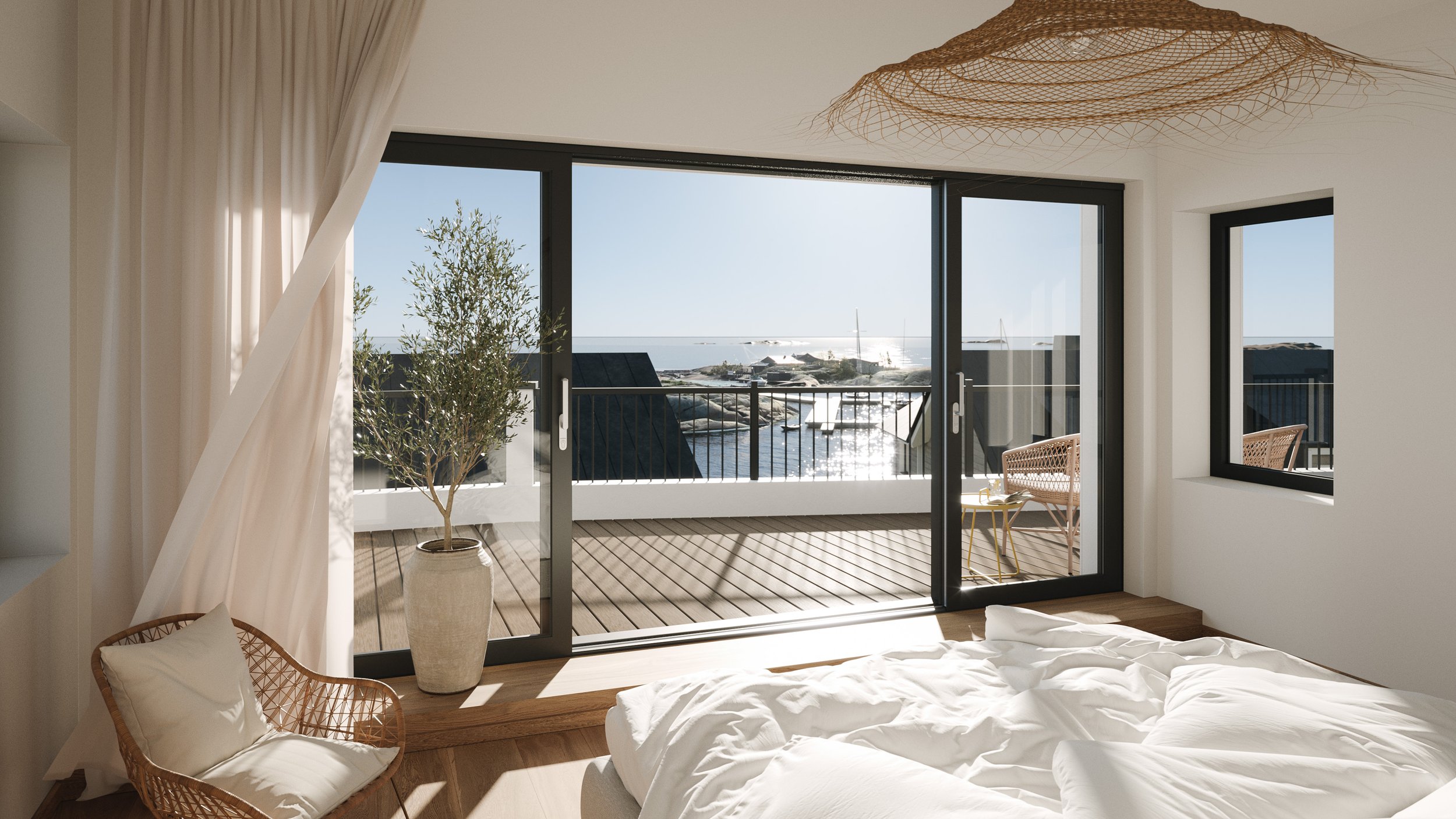Kuningatarniemi
Having successfully designed the adjacent Regatta Suites project, we were asked to also help in the development of the Kuningatarvuori area. Where the previous project flanked the Hanko yacht harbours eastern side Kuningatarvuori forms its western flank.
Kuningatarvuori is the southernmost promontory of mainland Finland. From it you have unhindered views onto the rugged outer archipelago with its beautiful red granite islands. As opposed to the largely unspoiled nature on the easter side of the harbour the western side is mostly flat landfill, with only the remaining parts of the actual Kuningatarvuori hill forming a beautiful granite/pine woods backdrop. An additional challenge is the proximity of the commercial harbour just northwest of Kuningatarvuori.
The project consists of four distinct parts: Kuningatarvuori, Kuningatarranta, Kuningatarniemi and Kuningatarsatama (which is yet to be completed).
With Kuningatarranta having already solved the problem with the commercial harbours’ noise, we were free to design more freely in Kuningatarniemi according to the advantages gives by the location. Here we wanted to reintroduce the traditional Hanko villa. Close to a century had passed since any new villa-areas had been planned in the immediate vicinity of Hanko centre.
The site is a slightly curving area facing west and south towards spectacular sea views. It is also the absolute southernmost building site in mainland Finland, so one of the villas will become the southernmost villa in the country! The city plan allowed for two story buildings in the front row and mostly 2 ½ in the back row. We wanted to further increase the height difference between the two rows by terracing the terrain, and so making it possible for the back row villas to have unhindered views over the front villas. The rows are also staggered so that all back row villas have views through the spaces between the front villas. The architecture is a slightly modern take on traditional Finnish wooden villa-architecture with large terraces and balconies taking full advantage of the stunning location. The facades are discreetly coloured with white trimmings and black details to add contrast and crispness. The garden courtyards will have traditional archipelagic plantings that can survive the demanding sea climate.




